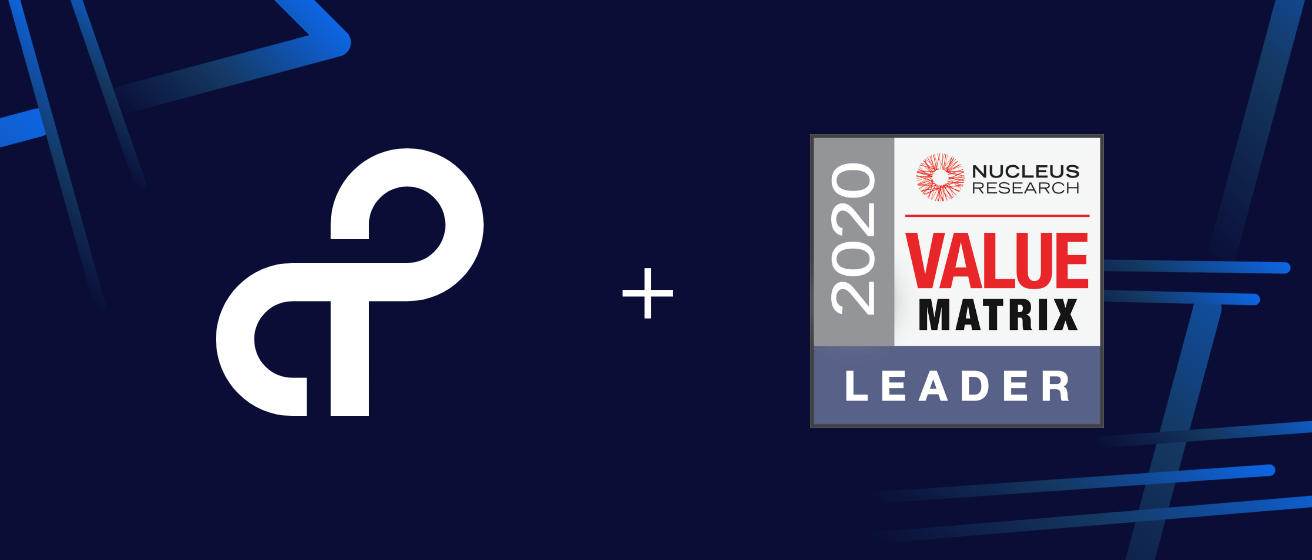The new leaders in iPaaS and how your integration strategy must adapt


Michael Peach
Head of Product Marketing
The state of enterprise iPaaS has changed dramatically in less than a year, which means you must adapt your integration strategy. Here’s how.
The state of enterprise iPaaS is changing. Here’s why that’s important
iPaaS, or “integration platform as a service,” is an idea that, like so many other concepts in enterprise business, is changing rapidly. Why? Because integrations alone — simply moving data between applications — is insufficient for modern businesses.
API integrations are, of course, the software-level connections you and your customers need built out between different software applications to ensure they talk to each other properly and can flow your mission-critical data between them. The challenge of building integrations is that the way data flows between applications is dictated by underlying business processes. Enterprises need to apply complex timing, logic, and transformations to integration operations. As a result, they have historically been labor-intensive IT projects that took months to implement.
Today, business users expect these capabilities from their software on day one. As a result, being a leader in enterprise iPaaS, or in integration strategy in general, is quickly becoming less about the bulky, IT-focused tooling of 10-15 years ago, and more about fast, flexible solutions that provide business users with integration and process automation capabilities that can match the usability they expect from modern SaaS applications.
 The average enterprise uses 1,200+ cloud services. None offer custom integrations out-of-the-box. Image courtesy Netskope.
The average enterprise uses 1,200+ cloud services. None offer custom integrations out-of-the-box. Image courtesy Netskope.
The challenge: Too much software, not enough IT support
To clarify, the urgent need for robust, customized integrations in the enterprise isn’t an emerging trend that will eventually affect the way you do business. It’s already here. The average enterprise already uses more than 1,200 different cloud services across the entire organization, including marketing, HR, sales, services, finance, and everywhere in between. And while some software applications include pre-built, point-to-point integrations to a handful of other services, none of them offers custom automation that aligns with your company's unique business processes.
Here’s the rub. While the so-called “SaaS explosion” has led enterprises to adopt thousands of new technologies, it hasn’t done anything to mitigate the need for companies to complete important strategic technology goals. Companies still need to pursue digital transformation, the important business of migrating from pen-and-paper, brick-and-mortar solutions to digital ones, as well as from last-generation, on-premise solutions to faster, portable, scalable, always-on cloud solutions. (To say nothing of the increasing need for information security and adoption of privacy standards such as GDPR, CCPA, and HIPAA.) If anything, the dramatic proliferation of technology is only exacerbating the problem.
As companies continue to struggle to migrate to a fully-digital, 100% cloud-based workplace, teams throughout the organization struggle to implement and drive value from their newfound technology. As already-overburdened IT teams find more of their increasingly scarce time devoted to strategic initiatives, they also see their own backlog explode from endless helpdesk tickets submitted by different business units that need support with implementation and integrations. And line-of-business teams remain blocked by the inability to wrangle the proper data management and functionality they need from the software in their tech stack because they aren’t engineers themselves. The result is wasted time, lower time-to-value, growing skills gaps, and lower ROI from all that pricey new software.
 For marketing alone, companies report a 66% technology skills gap. Image courtesy Econsultancy.
For marketing alone, companies report a 66% technology skills gap. Image courtesy Econsultancy.
The solution: A new breed of enterprise iPaaS
The story so far: the increasingly pressing need for custom automations across a growing array of applications is posing multiple challenges for enterprises. Sadly, the iPaaS solutions of 10 years ago, or even from last year, aren’t equipped to solve all these challenges in a way that positions your organization to survive and grow revenue:
- A lack of integrations blocks line-of-business teams from properly implementing and driving ROI from their pricey tech stacks
- Integrations are difficult to prioritize and implement by IT teams, whose time is already dominated by strategic projects
- Your customers already expect robust, functional integrations out of the box
If only there were some way to solve all these pain points, while also empowering both IT teams and integration-starved line-of-business teams to unblock their processes and do more, faster, you say. Fortunately, now there is.
Smart enterprises are turning to General Automation Platforms (GAP), which offer the robust technical integration and automation capabilities of enterprise iPaaS with an easy-to-use, low-code user interface that anyone from any team can use, along with the enterprise-grade governance and security that IT teams trust.
The General Automation Platform unblocks business users by letting them develop automations with complex routing, logic, and transformation across any cloud services in their tech stack with an intuitive, visual drag-and-drop interface. It also unblocks IT teams by not only enabling line-of-business teams to build their own integrations (removing these onerous tasks from the IT queue), but also by offering enterprise-grade authentications and data governance that IT teams can easily standardize across marketing, sales, services, HR, and any other team. GAPs even enable smart enterprises to deliver the integrations their customers expect faster than any internal build, without the need for future maintenance.
As you can see, there are significant changes happening in the integrations space, which is why there’s a new crop of leaders in enterprise iPaaS. Learn more in the 2020 iPaaS value matrix from Nucleus Research, which outlines the changing landscape of enterprise integrations and reveals a new generation of leaders who are placing powerful process automation capabilities directly in the hands of business users.